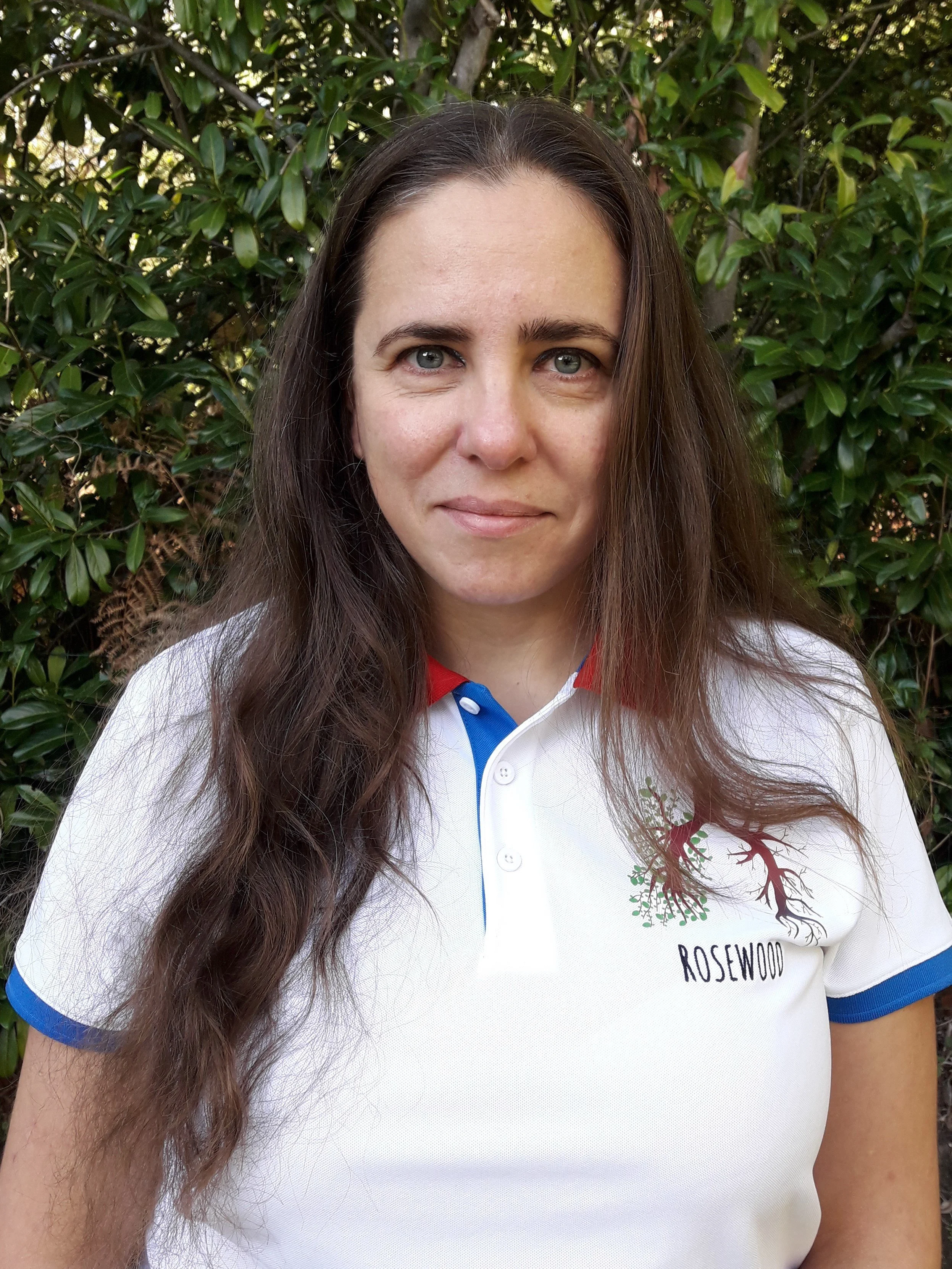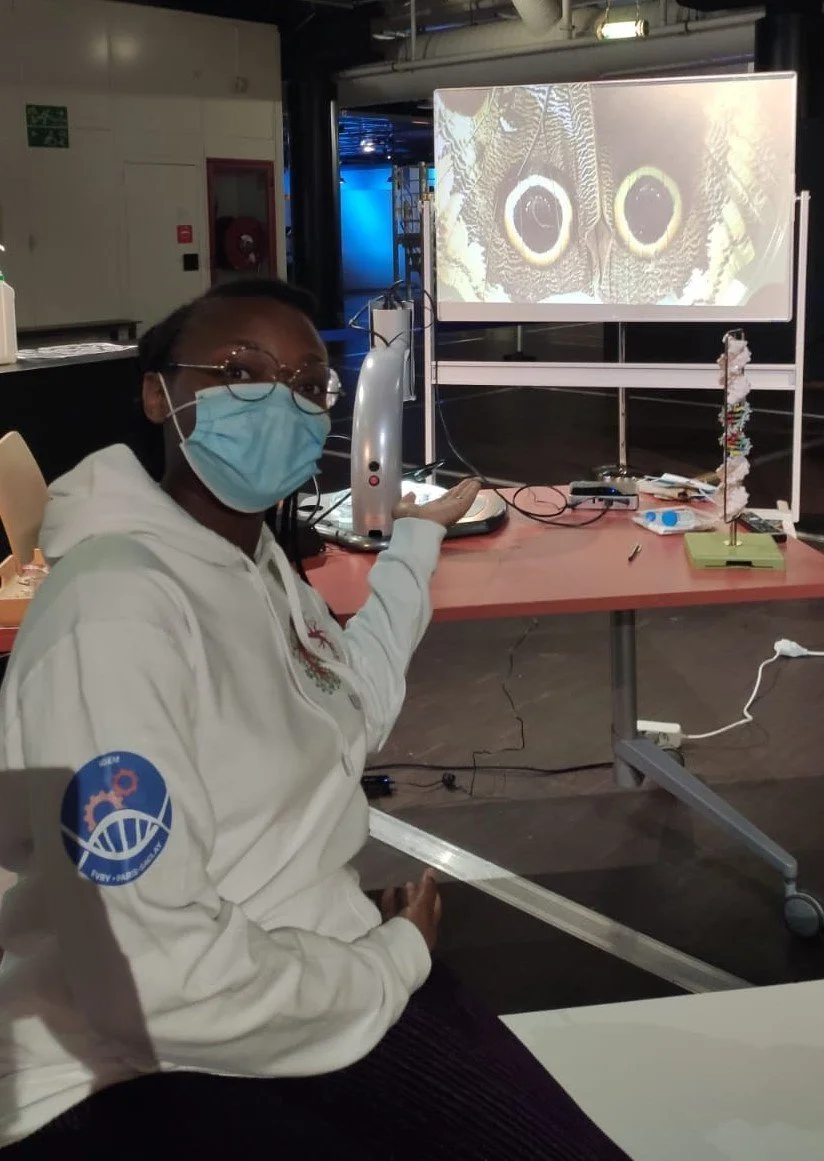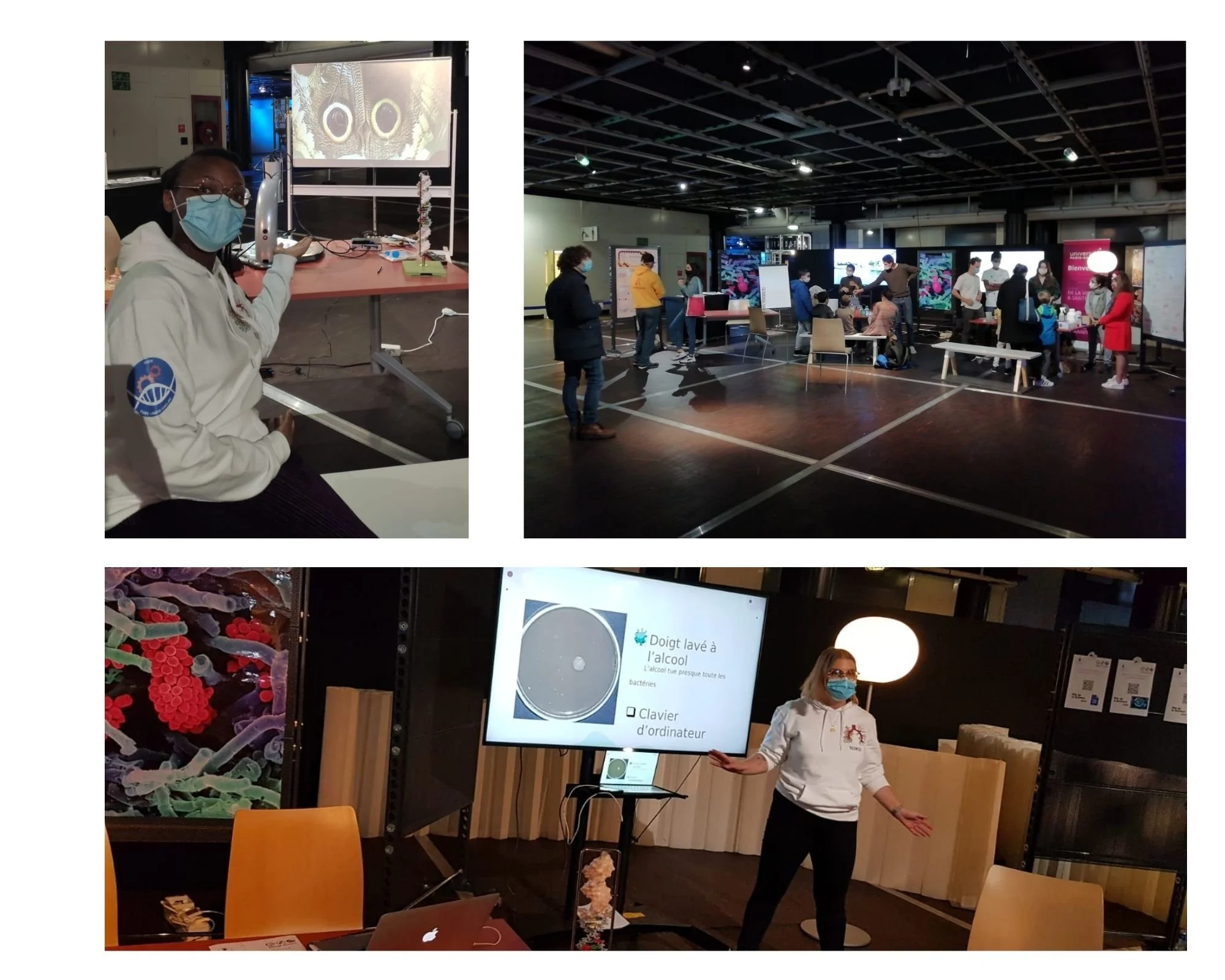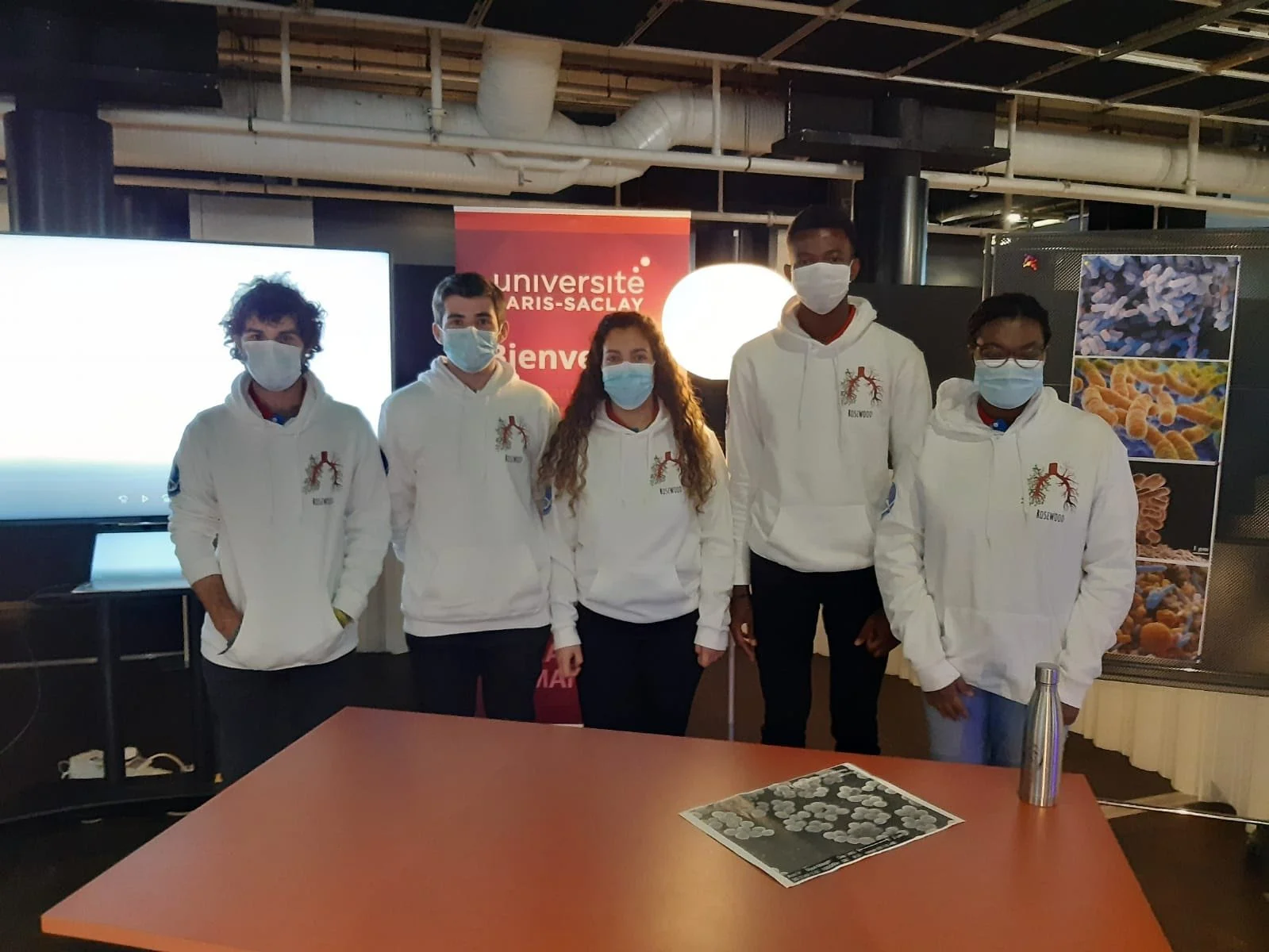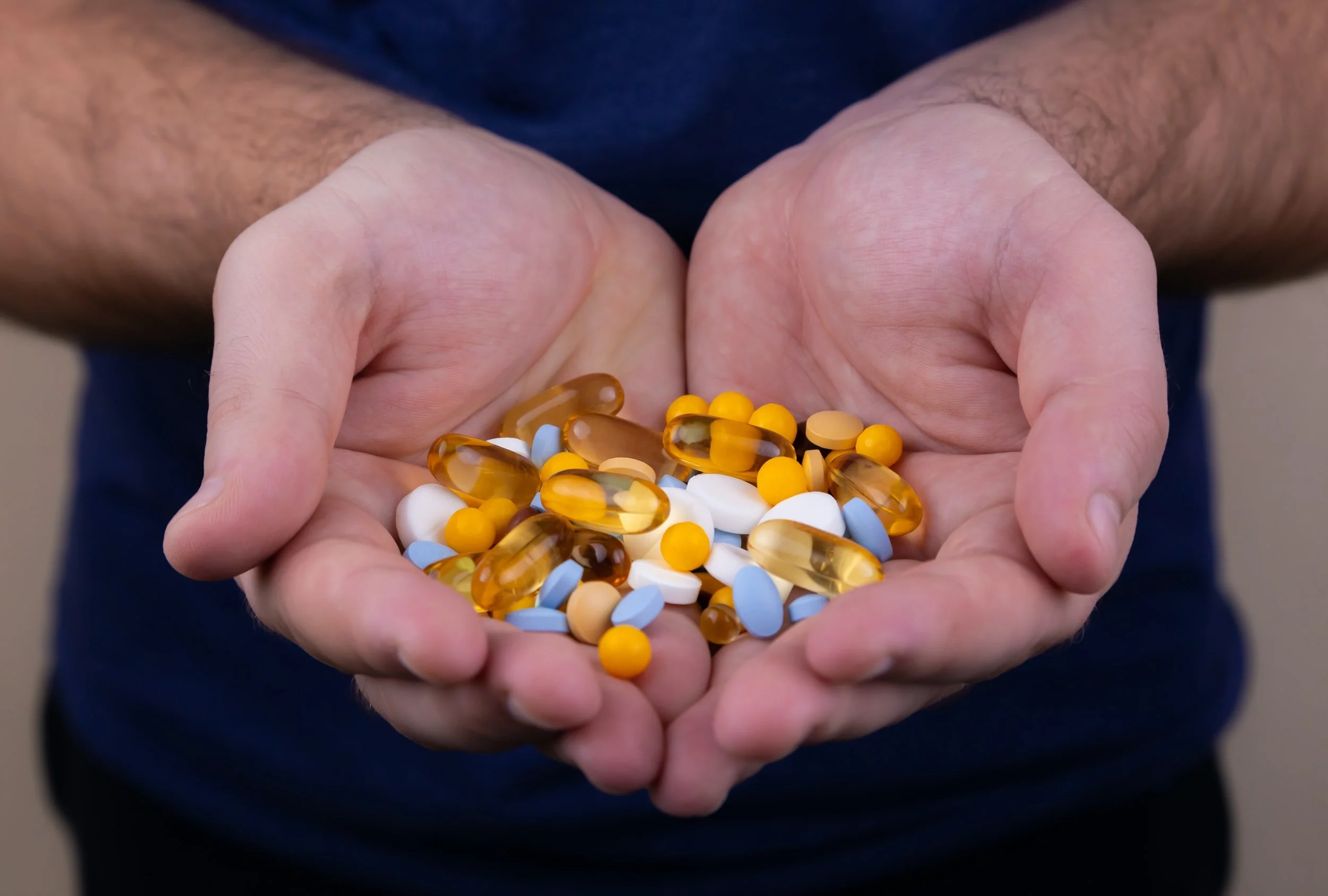From dead bodies to a paper - PIs perspective on iGEM. In conversation with Ioana Popescu
Ioana Popescu
An interview with Ioana Popescu, as the PI of Evry Paris-Saclay iGEM 2020 team and co-author of “Toehold switch based biosensors for sensing the highly trafficked rosewood Dalbergia maritima” paper
What inspired the project idea?
It started out with a very motivated student. Maëva, she came to me excited and said “madam, madam, I want to do iGEM”. I said “yes of course”. “I want to make it into the team”. “But there is no team. If you want to do iGEM, start the team”. So she started recruiting. In January the team didn't know what to do.
All iGEM projects start like this - What to do? And Maëva at that point was a last year bachelors student and wanted to do a masters in criminology. I said “Okay. Look for something in criminology, why not. If that's what you want, and others don't know what area to look in, go for criminology”. Afterwards, we all quickly realized that we can`t work with dead bodies, it is not possible. So the team moved to [search for] other illegal things that were done in the world. And because there were other students that were more interested in ecology and environmental issues, they started being interested in the wildlife trade. Of course everybody knew the tigers and rhinoceros that are widely trafficked, so one of the first ideas was “let's detect a cat from a tiger”. But finally the students said “no no, we want to detect rosewood, because it is the most trafficked wildlife product in the world”. That is how it started.
The main theme was criminology, finally she [Maëva] wanted to do something else, now she is a student in a pharmaceutical masters.
What kept everyone motivated to write the paper?
Sometimes I have very big problems motivating people, I am not that type of person. What kept them [motivated] was the guy who became the first author of the paper. Who was motivated to do more experiments afterwards. Actually it was after the review that he did more experiments. Also there were a few students who already finished their masters degrees and wanted to continue in academia. If you want to go into academia, publications are a must. They wanted to have their names on the publications, it kept them motivated.
What were the biggest challenges while guiding a team in the paper writing process?
Motivating them was hard, because of course they don't have time, and it takes a lot of time to write things correctly. But of course afterwards I had to go and rewrite quite some parts, especially on those that were not done by the first author. But we finally managed to do it together.
Evry-Paris Saclay team member educating the public during an event
In this paper, it's only part of the iGEM project, because it was the part that worked the best. There was another part that was not that good, so we didn't include it in the paper. There were nine, only four worked in vivo and in vitro.
What about the peer review process?
It was not reviewed as an iGEM paper. It was published in an iGEM special issue, but the reviewers did not at all take into account that it was an iGEM project. It was reviewed as any other paper. The questions were very pertinent. We tried our best to answer them. The reviewers asked for experiments just to confirm some things. So it was okay.
Did you continue the research after publication?
No, I am overwhelmed by all other things. We submitted the paper at the end of June last year. By then we already started the 2021 team. It was on a completely different project. And now I want to publish that too. We are continuing more experiments with some students that are doing their internships. So we finished the 2020 project, we are not continuing the 2021 [project], and we have already started 2022.
With iGEM it's always like this, because each year I'm starting a new subject. And it is not easy to start a new subject each year and to do it correctly. That is the difficult part.
What were the happiest moments during the process?
The happiest moment was when we did the first functional test successfully. When we co-transformed [with the trigger and the switch] and saw green bacteria only when the trigger was present. Students said “look these are green!”. And we put them under UV and took a photo. “Wow, this was a very exciting moment just to see green bacteria on the plate!”. “With the same plasmid, are you sure?”. Yes we were sure, we didn't mismatch, we were not tired, we repeated experiments. Indeed everything was working. That was a really exciting moment.
How did iGEM impact your career?
I started doing iGEM in 2017. It's been 6 years that i've been doing it. And actually personally it is very rewarding. Also I had the chance to publish papers as the last author. It was thanks to iGEM I was able to do so. Just because I am an associate professor, and in France we have a lot to teach [192 hours/year], I’m at more than 200 hours per year, which leaves us very short time for research. For example, now there are students in the lab, that's how I can do things. But it is hard to supervise them, because I am simply not always there. Apart from classes, I have a lot of meetings to attend, there are tests to check. There is more work than in other countries.
Evry-Paris Saclay 2020 iGEM team presenting in a science festival
[iGEM] allowed me to do teaching otherwise. It is not like an internship. I don't tell the student what to do every day. This is different. The students are starting from zero. I sometimes feel like I`m breaking down their dreams because I'm bringing them to reality. I say “okay let's do it! How do we do it?”. I say that we can't do this, because It doesn't work with eukaryotic cells, we don't have equipment, let`s work with E. coli, we cannot grow eukaryotic cells here etc.
I also discussed with another student, who already did iGEM in another country, and he said that sometimes PIs stay at a very high scientific level, only see the big picture, but they do not help with what to do on a day by day basis. I am with them every day just to make sure everything is done correctly in the lab and that when we design what we are going to do. I bring them to reality: “Let's do it step by step, let's validate each step. We cannot run the whole experiment from a to z, we need to validate everything individually. I am breaking down their dream, because they can only do small things in a very short time.
Has this reality check helped students?
I saw that there were students I discussed in the lab and they said “yes I had other ideas about how life would be [in the lab], and I don't see myself doing this full time. I don't want this.” They were discovering real scientific life. They were getting to the basics.
I also saw other students that really discovered and said that is what I want to do my whole life. And they started looking for places where they could do it. They had their first experience here. “I learned it here, saw it in iGEM, now I want to go to other labs and see how they do it”. I also saw this. I say that this is a different kind of teaching. It's a dream way that you want to teach students, it's very concrete.
Would you want to implement the type of teaching iGEM provides in normal lectures, is that possible in today's setting?
It's complicated, because research takes a long time. Even in iGEM. We start at the beginning of the year, December-January, have the first meetings and find projects and it goes till October. It's a baby. 9 month to do it. It's a short time for research. In class you only have a few hours. Even more complicated. You cannot do this type of teaching with the academic rules. That's why it's extra. It's not included. I don't know other systems, but they are more or less rigid in this kind of teaching. Because they don't fit into a category.
The team engaging with the public
It's different, but I'm actually using iGEM in teaching. For the last ten years I've been doing the master 2 systems course in synthetic biology. It has been running since 2010. We set up a practical course that is based on the “E. Chromi” project by the Cambridge 2009 team, where they implemented a carotenoid pathway. And we started from this. We changed a few things around the time. It allows us to give an example of a project that was done by students. That was in the wet lab.
I'm also having a module for the bachelor students “introduction to synthetic biology”, where I talk about iGEM, about standardization, and different iGEM projects. One quarter of their evaluation is presenting an iGEM project in 10 minutes. They have questions from this. There are a lot of topics that are addressed in iGEM projects, they were done by students their age, so they should be able to understand them. And they choose the topic that they like.
For bachelor students, they take 3 hours of tutorial, where I'm discussing one iGEM project of Evry Paris-Saclay team and in 3 hours I'm telling them why we did things the way we did. All the small choices, results, how we did it. This is how they learn.
What advice would you give for igemers want to publish their own work or are trying to get into research?
You need to have solid data, the experiments should be performed correctly, and do all experiments that are necessary. You also need to have a nice story behind it. That's how you can get it published: solid data and a nice story.


